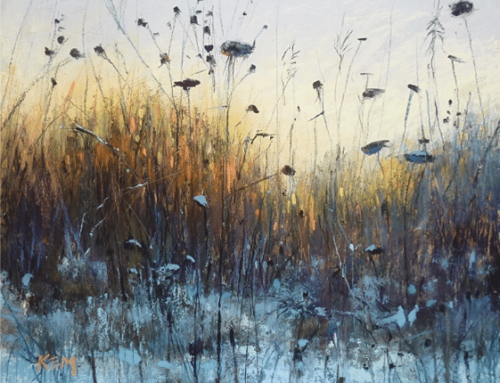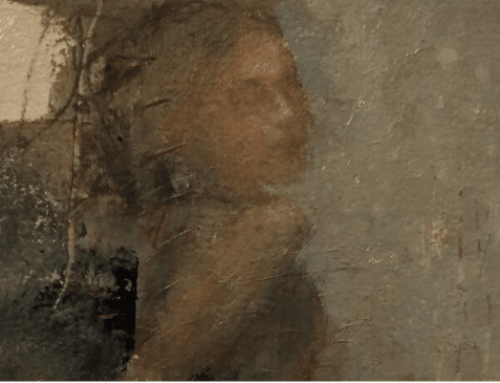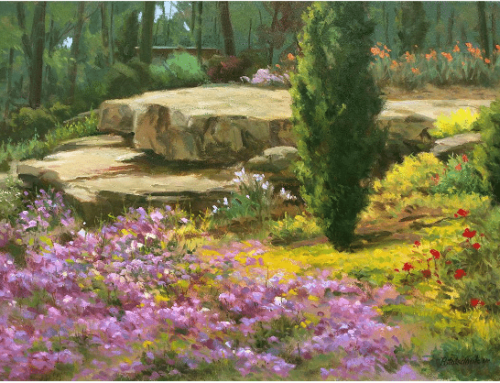D. Eleinne Basa believes in the importance of artistic interpretation of the subject.
“One important difference, in my opinion, between an artist and a painter is that an artist will take a subject, often overlooked, and through their interpretation will present the subject matter in a new way,” she says. “A painter tends to render things as they are, without a great deal of thought or overall organization.”
Basa was the first ever Grand Prize Winner of the Salon. Next month she’ll be judging the salon’s monthly champion.
Basa admires work that invites the viewer “to look at [a subject] in a new way causing it to have a strong impact.” She tends to favor imaginative, well-composed paintings with tight or unusual perspectives and expressive color handling.
A Classically trained artist, Basa began painting at the young age of eight. Her early training still influences her, she says, as it is when she is painting “en plein air” that she is brought back to a time in her childhood when, “painting was pure and comes from someplace deep within.”
Basa’s landscapes allure the viewer to move into the work with their radiant light and luminescent qualities reminiscent of the early Luminists and Tonalists of the American School. She is inspired by painters like Thomas Moran and George Inness and is continually striving to achieve a certain timelessness to her work.
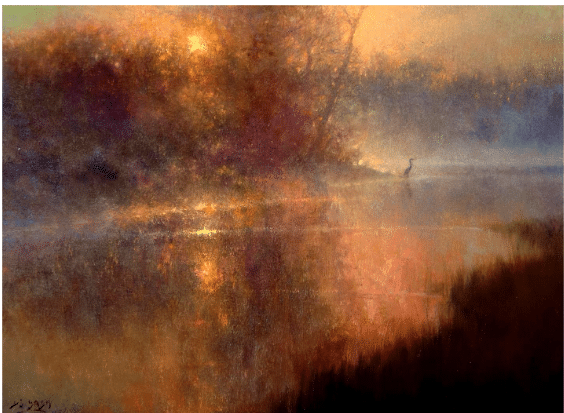
D. Eleinne Basa, Quiet Sunrise, oil, 12 x 16 in.
What exactly does an artist mean when they name among their influences the artists of the Luminist or Tonalist School, particularly American painter George Inness (May 1, 1825 -August 3, 1894)?
Compare Basa’s “Quiet Sunrise” (above) to George Inness’s 1893 “Home of the Heron” (below). Both focus on a lone heron at dusk silhouetted by amber light. Both artists move the viewer to feeling with atmospheric backlight and an overall “veil” of soft-edged, warm sienna tones, ranging from light to richly dark.
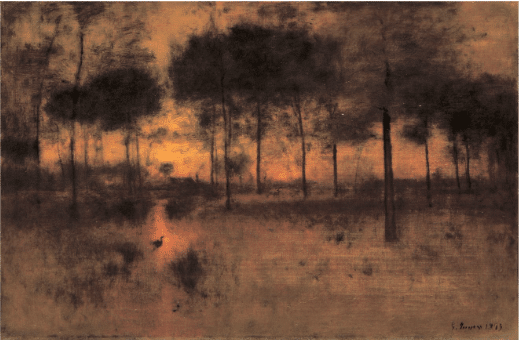
George Inness, The Home of the Heron, approx.. 30 x 50 in.,1893
Tonalism downplays realistic landscape painting’s use of multiple, lifelike colors and details in favor of inducing a meditative mood, something more akin to music than documentation. Art historians use the term to describe an American artistic movement spanning from about 1880 to approximately 1920. More generally, the term (tonalism, tonalist, or tonalistic, with a lower case “t”) describes a style of painting in which color range is limited so that subtle gradations of the middle values (aka color “tones”) constitute the primary aesthetic and means of expression.
Basa doesn’t restrict herself to a tonalist approach alone. In addition to natural landscapes, Basa paints vivid urban scenes and many other subjects in a range of expressive styles and approaches to light and color.
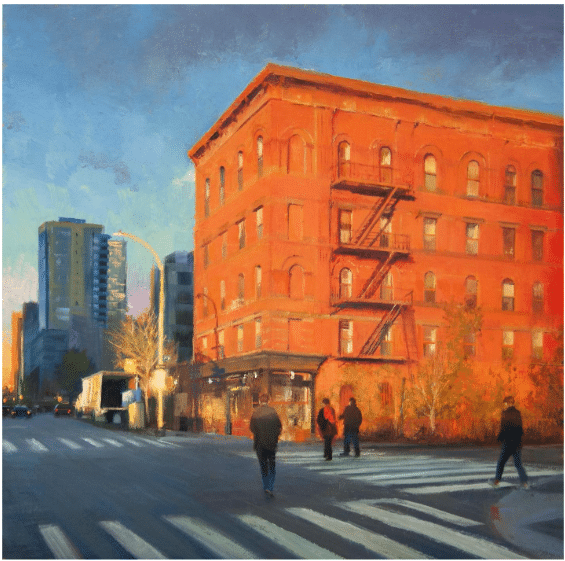
D. Eleinne Basa, AFTERNOON GLOW (HUDSON YARD), oil, 12 x 12
A professional and full time artist since 2004, Basa participates in several national shows and have been invited to participate in prestigious events such as the American Masters at the Salmagundi Club in 2016 and 2018, Maynard Dixon Country show in 2009 , and the Gold Medal Shows of the California Art Club. She has won numerous awards including the 2018 Artists Choice Award at the American Masters Show at the Salmagundi Club in NY, the Art of the West award of Excellence at the California Art Club Gold Medal Show in 2012, and she was the $15,000 Grand Prize Winner of the 1st Plein Air Magazine Online Salon also in 2012. Her Paintings have been a finalist in the Arc Salon Competition in 2015, 2017, and 2018, and two of her paintings were chosen for awards 2020 .
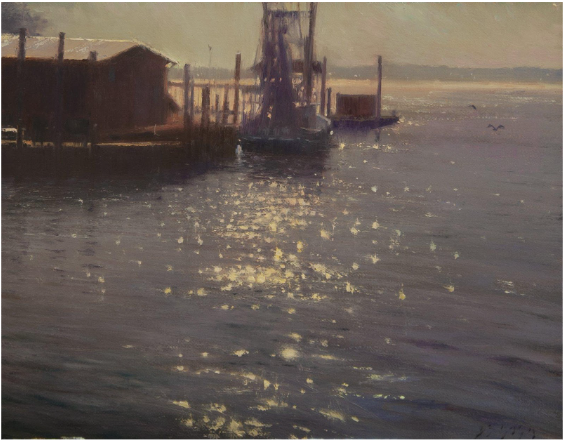
D. Eleinne Basa, Afternoon Glare, oil, 8 x 10
She has also shown her works at the National Arts Club in New York, the Gilcrease Museum in Tulsa, OK, The National Cowboy Museum in Oklahoma City, OK, the Autry National Center , the USC Fischer Museum , the Frederick R. Weisman Museum of Art in Malibu, and the Museum of Natural History in Los Angeles California. Her works are also in the Permanent collections of the Academy Art Museum in Easton, MD. , the Cherokee Club of Atlanta, GA. , and the CM Russell Museum in Great Falls, MT.
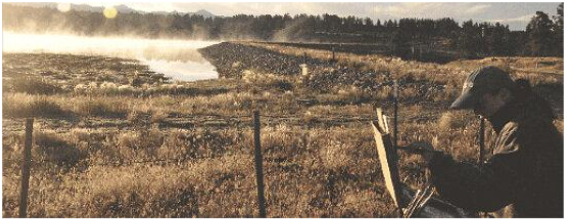
D. Elienne Basa at work en plein air.
Her work has been featured and shown in several magazine publications including Fine Art Connoisseur, PleinAir Magazine, where she was featured on the cover in 2012, Art of the West, Southwest Art, American Art Collector, Western Art Collector, and Western Art and Architecture.
The monthly PleinAir Salon rewards artists with over $50,000 in cash prizes and exposure of their work. A winning painting, chosen annually from the monthly winners, is featured on the cover of PleinAir magazine.
The deadline is ongoing, so visit PleinAirSalon.com now to learn more.


